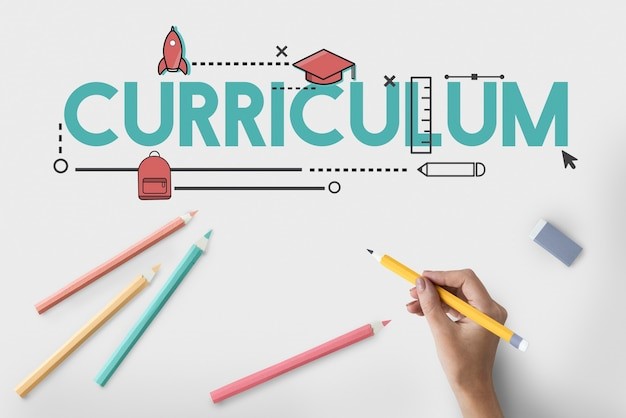Academic Content Development Services
Academic content development refers to the process of creating educational materials and resources for use in academic settings. This can include textbooks, lecture notes, online courses, educational videos, and other types of educational media.
The process of academic content development typically involves several stages, including research, planning, writing, editing, and publishing. In the research stage, writers and educators typically gather information and data related to the topic they are covering. This can involve reading academic articles, conducting surveys, or conducting interviews with subject matter experts.
In the planning stage, writers and educators typically develop an outline or structure for their educational materials. This can involve determining the key concepts and topics to be covered, identifying learning objectives, and deciding on the most effective teaching methods and media to use.
In the writing stage, writers and educators typically create the content for their educational materials. This can involve writing text, creating diagrams or other visual aids, and developing exercises or assessments to test students' knowledge and understanding.

In the editing stage, writers and educators typically review and revise their educational materials to ensure accuracy, clarity, and consistency. This can involve proofreading, revising content, and testing materials with students or other educators to ensure their effectiveness.
Once the educational materials have been developed and refined, they can be published and made available to students and educators. This can involve printing textbooks, uploading course materials to an online learning management system, or making educational videos available on a website or video-sharing platform.
Effective academic content development requires a deep understanding of the subject matter being covered, as well as a strong grasp of teaching and learning principles. It also requires attention to detail, strong writing and editing skills, and a commitment to producing high-quality educational materials that are effective in helping students learn and grow.
Academic Content Constituents
Self-learning material, modular content, assessment questions, case studies development, programming codes, and capstone projects development are all important aspects of academic content development. Here's why:

1. Self-learning material: Self-learning material allows students to study at their own pace, which can be especially helpful for students who struggle with traditional classroom settings. Self-learning materials can include textbooks, online courses, or other educational resources that students can access on their own time. These materials should be well-organized and easy to navigate, with clear learning objectives and exercises that reinforce key concepts.
2. Modular content: Modular content breaks down complex concepts into smaller, more manageable chunks. This approach allows students to focus on one topic at a time, which can be more effective for learning and retention. Modular content can be especially helpful for students who are new to a subject, as it can help them build a solid foundation before moving on to more complex topics.
3. Assessment questions: Assessment questions are an important tool for measuring student learning and understanding. They can help educators identify areas where students are struggling, and they can help students identify areas where they need to focus their studies. Assessment questions should be well-designed and clearly aligned with learning objectives.
4. Case studies development: Case studies provide students with real-world examples that illustrate key concepts and principles. They can be especially helpful for students who are learning complex subjects like business, law, or medicine. Case studies should be well-researched and provide students with clear learning objectives and questions to help them analyze and evaluate the case.
5. Programming codes: Programming codes are essential for students who are learning computer science or software engineering. They provide students with hands-on experience building software applications and solving real-world problems. Programming codes should be well-documented and include clear instructions and examples to help students understand how the code works.
6. Capstone projects development: Capstone projects provide students with the opportunity to apply what they've learned to real-world problems. They can be especially helpful for students who are preparing to enter the workforce. Capstone projects should be well-designed and clearly aligned with learning objectives, with clear instructions and guidelines for students to follow.
Growth of Content Development Industry
The content development industry is growing faster than before due to several reasons:
1. Increased demand for e-learning: With the rise of the internet and digital technology, e-learning has become increasingly popular. More people are seeking online courses and training programs, and as a result, there is a growing demand for high-quality educational content.
2. Expansion of digital platforms: Digital platforms such as social media, video-sharing sites, and online learning management systems have made it easier than ever to access educational content. This has led to an increase in the amount of content being produced and distributed online.
3. Globalization of education: With the globalization of education, there is a growing need for educational content that is culturally sensitive and relevant to learners from different parts of the world. This has created new opportunities for content developers to create and distribute educational materials that cater to diverse audiences.

4. Increased competition: As the demand for high-quality educational content has grown, so too has the competition among content developers. This has led to a focus on innovation and quality, as content developers strive to create content that is engaging, effective, and meets the needs of learners.
5. Advancements in technology: Advancements in technology have made it easier and more cost-effective to produce and distribute educational content. This has led to a proliferation of online courses, educational videos, and other digital resources.
Challenges in Academic Content Development
Academic content development can face several challenges, such as the need for high-quality content, keeping up with rapidly evolving technologies, ensuring accessibility and inclusivity, and engaging learners effectively. Here are some ways that technology can help resolve these challenges:
1. Quality Content: One of the most significant challenges in academic content development is ensuring that the content is of high quality. Technology can be used to help create high-quality content by automating some of the processes involved, such as research and content organization. There are several tools available that can help researchers and content creators gather and organize information more efficiently.
2. Rapidly Evolving Technologies: Another challenge in academic content development is keeping up with rapidly evolving technologies. One solution is to use technology to create more interactive and engaging learning experiences. For example, online platforms and tools such as gamification, virtual reality, and artificial intelligence can help create more interactive and immersive learning experiences.
3. Accessibility and Inclusivity: Ensuring that educational content is accessible and inclusive is another challenge in academic content development. Technology can help resolve this challenge by providing assistive technology and tools to make content more accessible for learners with disabilities. For example, closed captions, transcripts, and audio descriptions can make videos more accessible for learners with hearing or visual impairments.
4. Engaging Learners Effectively: Engaging learners effectively is critical to the success of academic content development. Technology can help create more engaging content by providing interactive features such as quizzes, polls, and games. Social media and messaging apps can also be used to facilitate communication between learners and instructors, crea
Leave Us A Comment
